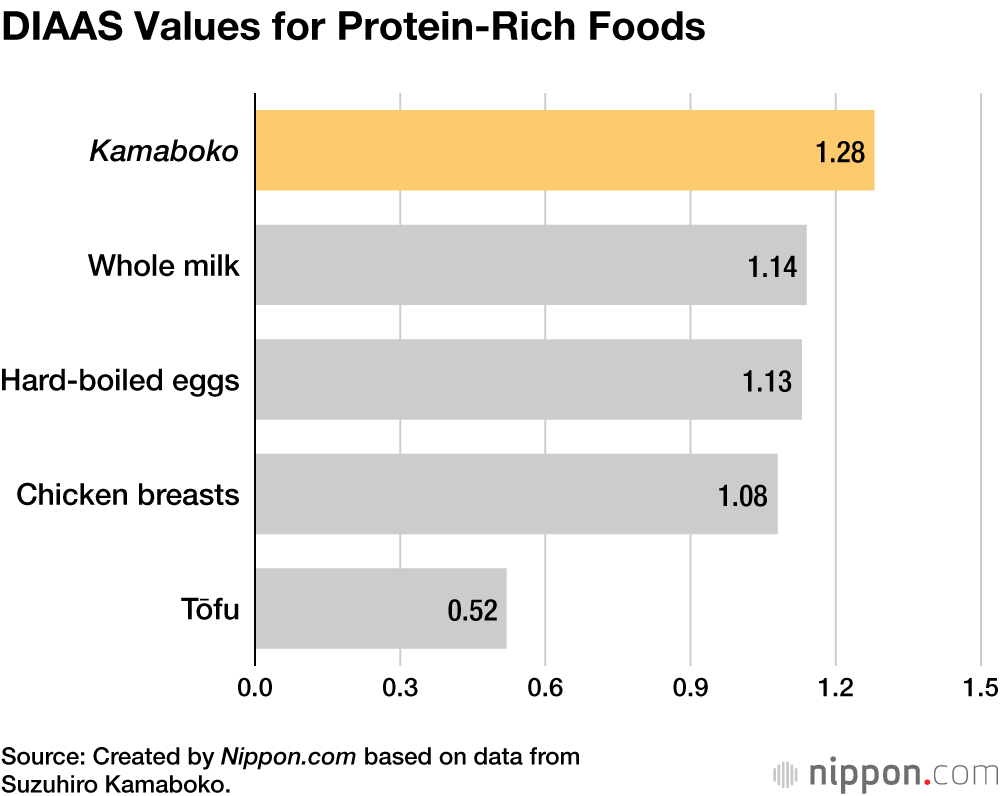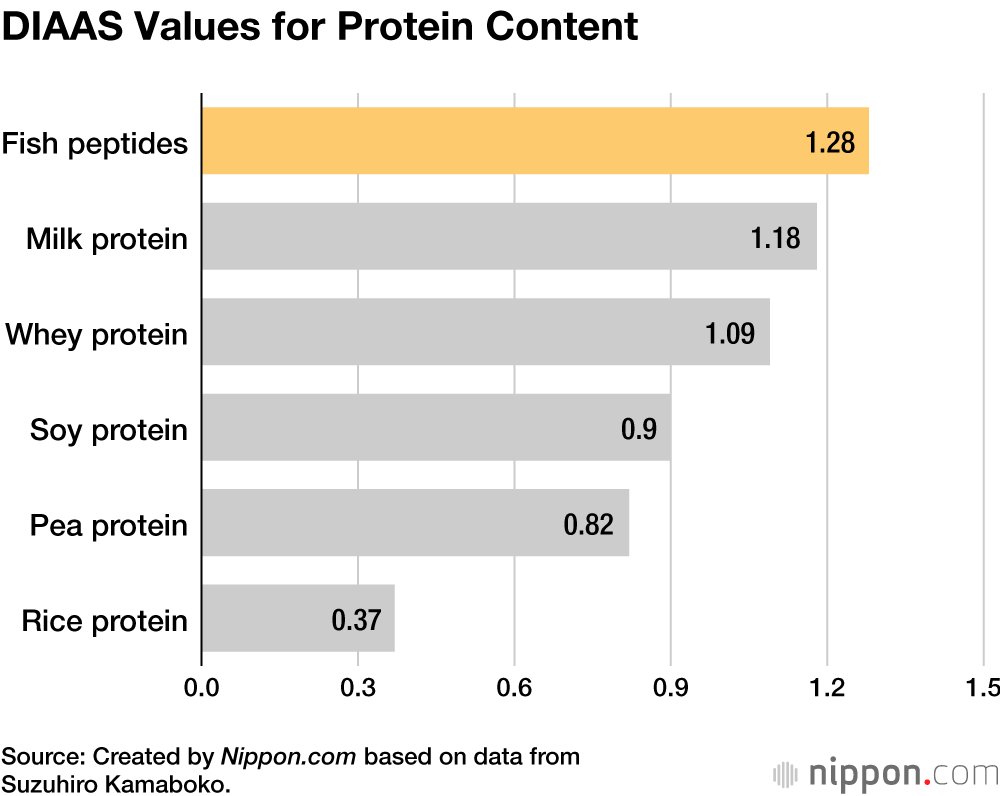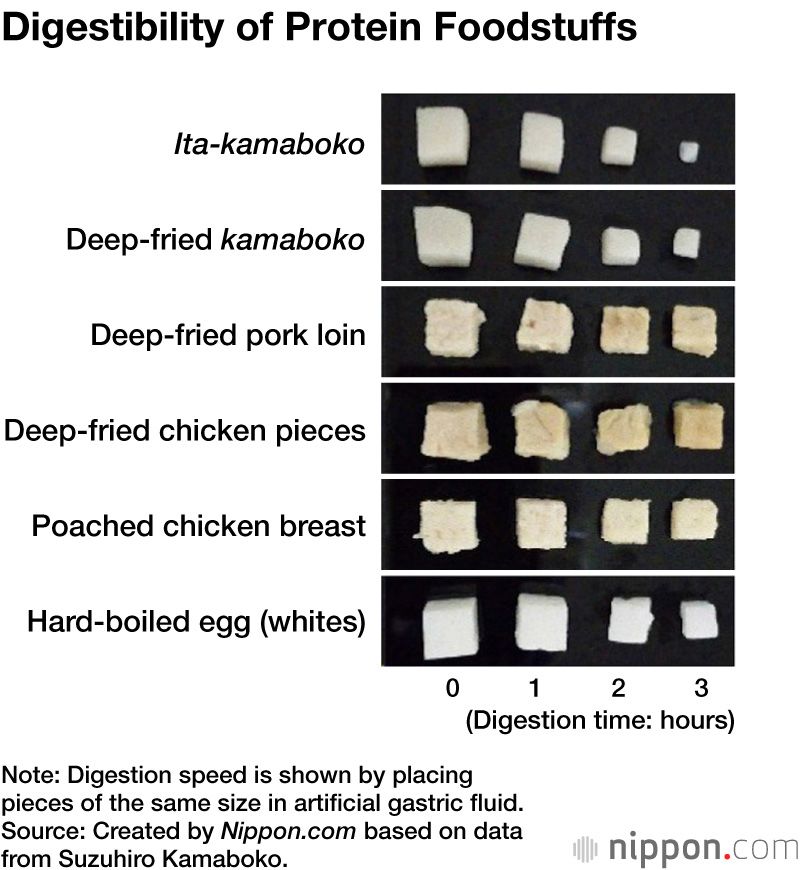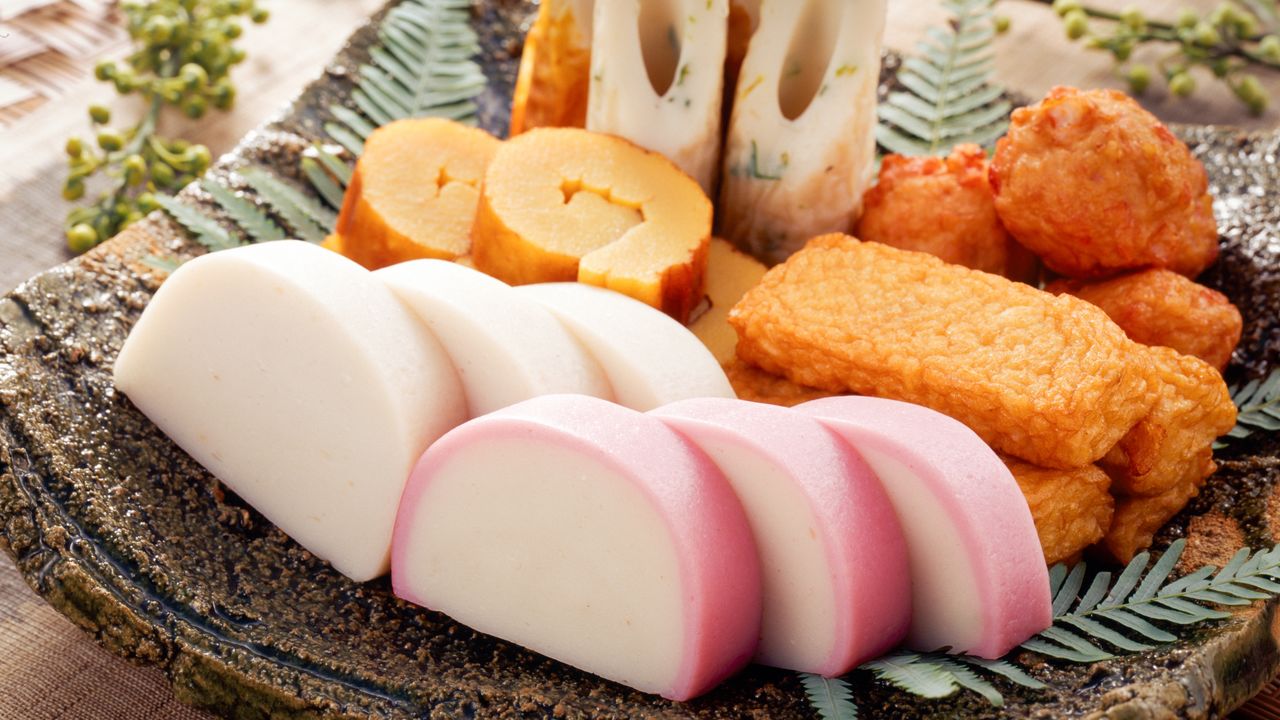
Fish-Paste Products as a Superior Source of Protein
Guideto Japan
Guide to Japan Food and Drink- English
- 日本語
- 简体字
- 繁體字
- Français
- Español
- العربية
- Русский
Making Fish Paste Popular Again
In the summer of 2023, the Japanese archipelago suffered record-breaking hot weather. It was not until mid-October that it finally began to feel like autumn. The processed marine products known as nerimono, made from fish paste, have suffered a serious blow from these higher temperatures, as well as from the diversification of the Japanese diet in general.
As the weather cools down, people want to eat hot-pot meals like oden. Standard ingredients of oden are products made from fish paste such as chikuwa (fish paste shaped into a tubular form and grilled), hanpen (soft, fluffy fish cake), and satsuma-age (deep-fried fish paste patty with chopped vegetables). As a mild winter is forecast this year, marine product processers are trying to boost consumption of their products as much as possible, and are launching a counteroffensive to rebuild the popularity of nerimono by promoting the health of their foods and developing a variety of new products.
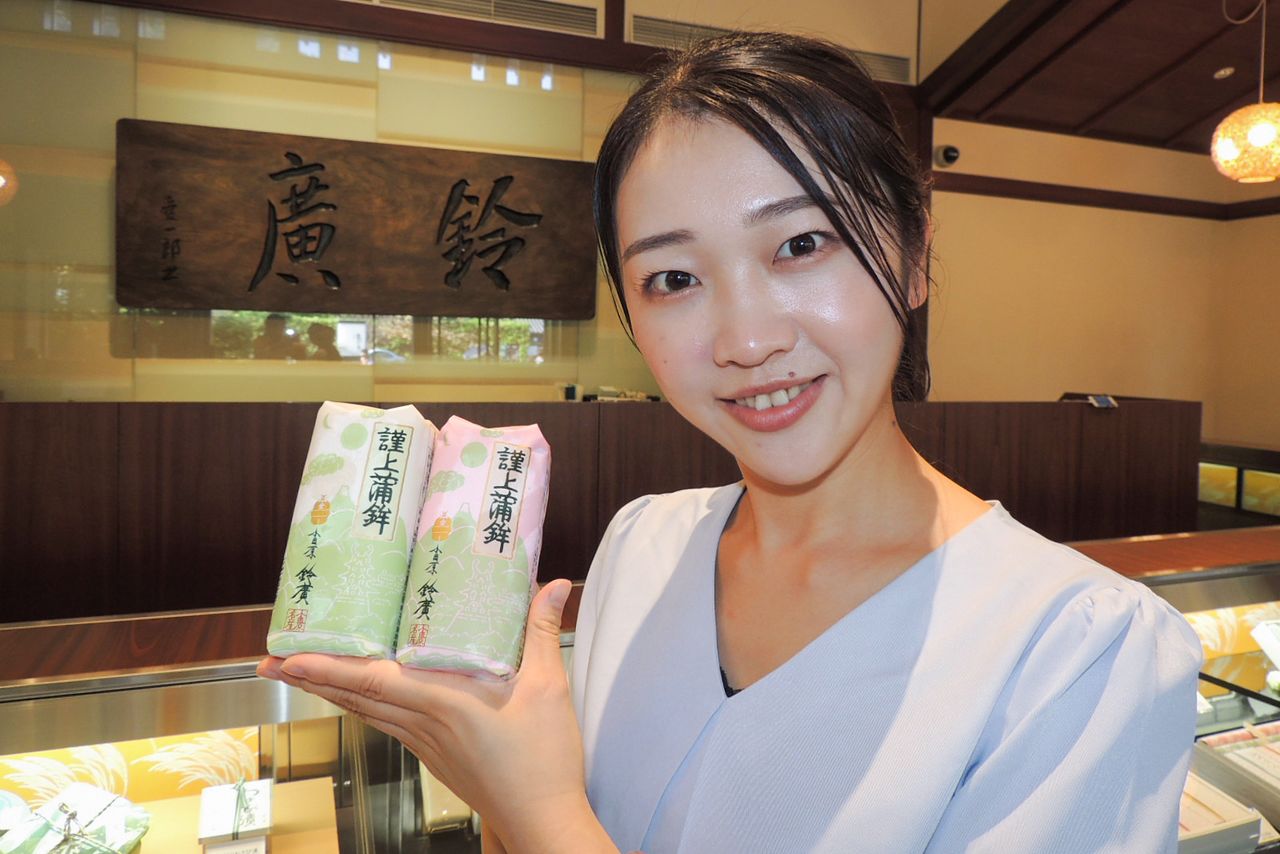
A Suzuhiro Kamaboko PR spokesperson promoting her company’s kamaboko. (© Kawamoto Daigo)
Fish has long been a key source of protein in Japan, a country surrounded by the ocean on all sides and with many rivers. Processed marine products have a long history, and kamaboko, a popular fish-paste product, is said to have originated in the Heian Period (794–1185). A text from that time has a section that records the menu of court cuisine, and the word kamaboko accompanies an illustration of a dish made by coating sticks of bamboo with fish paste and then grilling them.
Around the Muromachi period (1336–1573), ita-kamaboko, fish paste attached onto a strip of wood and grilled, was invented. To distinguish ita-kamaboko from the original kind of kamaboko made with bamboo, the original kind was called chikuwa-kamaboko, which gradually came became shortened to chikuwa. As cuisine grew more elaborate during the peaceful Edo period (1600–1868), steamed kamaboko appeared, and pink and white kamaboko became an essential part of traditional Japanese osechi cuisine, or New Year dishes, to bring good luck.
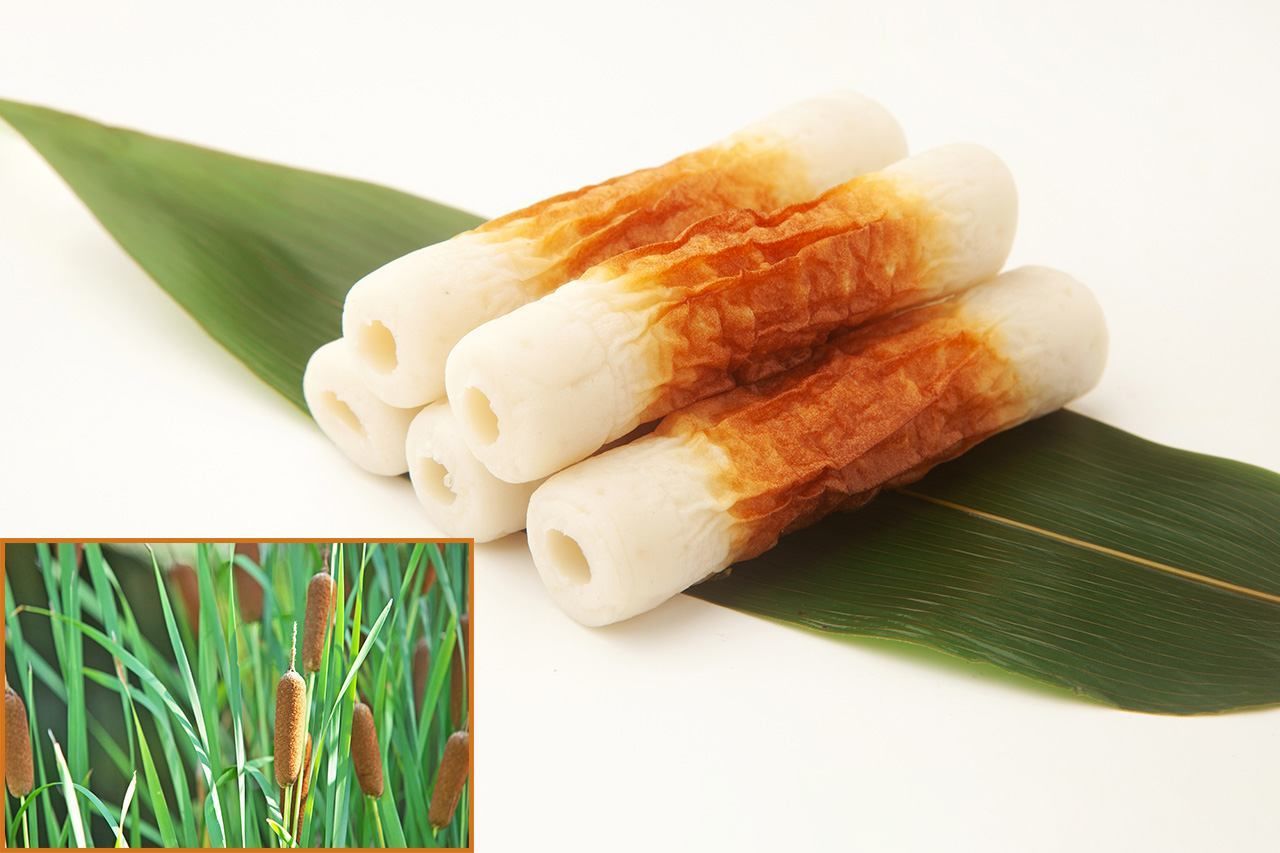
Chikuwa, the original form of kamaboko. The most convincing explanation about the name comes from its resemblance to cattail spikes (bottom left). (© Pixta)
In the Meiji era (1868–1912), kamaboko and chikuwa became standard items for meals. They were also convenient as a side dish to go with sake, and popular as gifts. However, as postwar economic growth led to diversification of the Japanese diet, and fish consumption also declined, nerimono was eaten much less frequently. Demand for datemaki, which is a kind of rolled omelette made with fish paste and a familiar part of osechi cuisine together with kamaboko, has declined even further. An increasing number of the younger generation do not even know that datemaki is a kind of processed marine product with fish paste mixed into it.
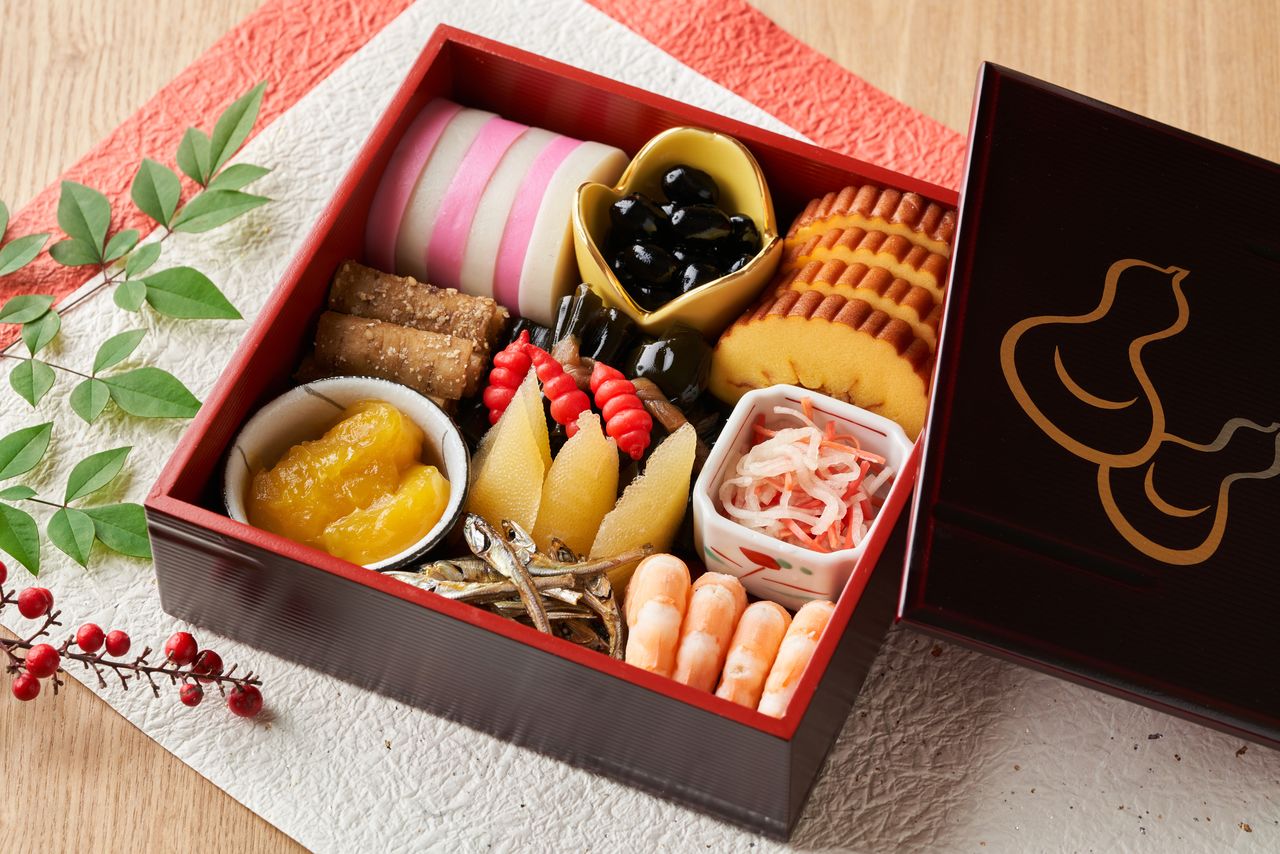
Pink and white kamaboko (upper left) and datemaki (upper right) are still indispensable parts of osechi cuisine. (© Pixta)
Production Plummets Along with Oden Consumption
According to statistical research by the Ministry of Agriculture, Forestry, and Fisheries, the production of fish paste products in 2022 was approximately 471,000 tons. This is a decrease of 60% from 1,155,000 tons in 1975. Many processing manufacturers are small-scale enterprises in rural areas, and a lack of successors is combining with the shrinking market to cause their numbers to decline.
Oden, a classic winter dish that uses fish paste products generously, is also showing signs of waning in popularity. Convenience stores used to get a head start on the autumn season with simmering pots of oden near the cash registers as early as the end of August in some places. But nowadays, the oden sales period has shortened considerably due to the extremely hot summers and mild winters.
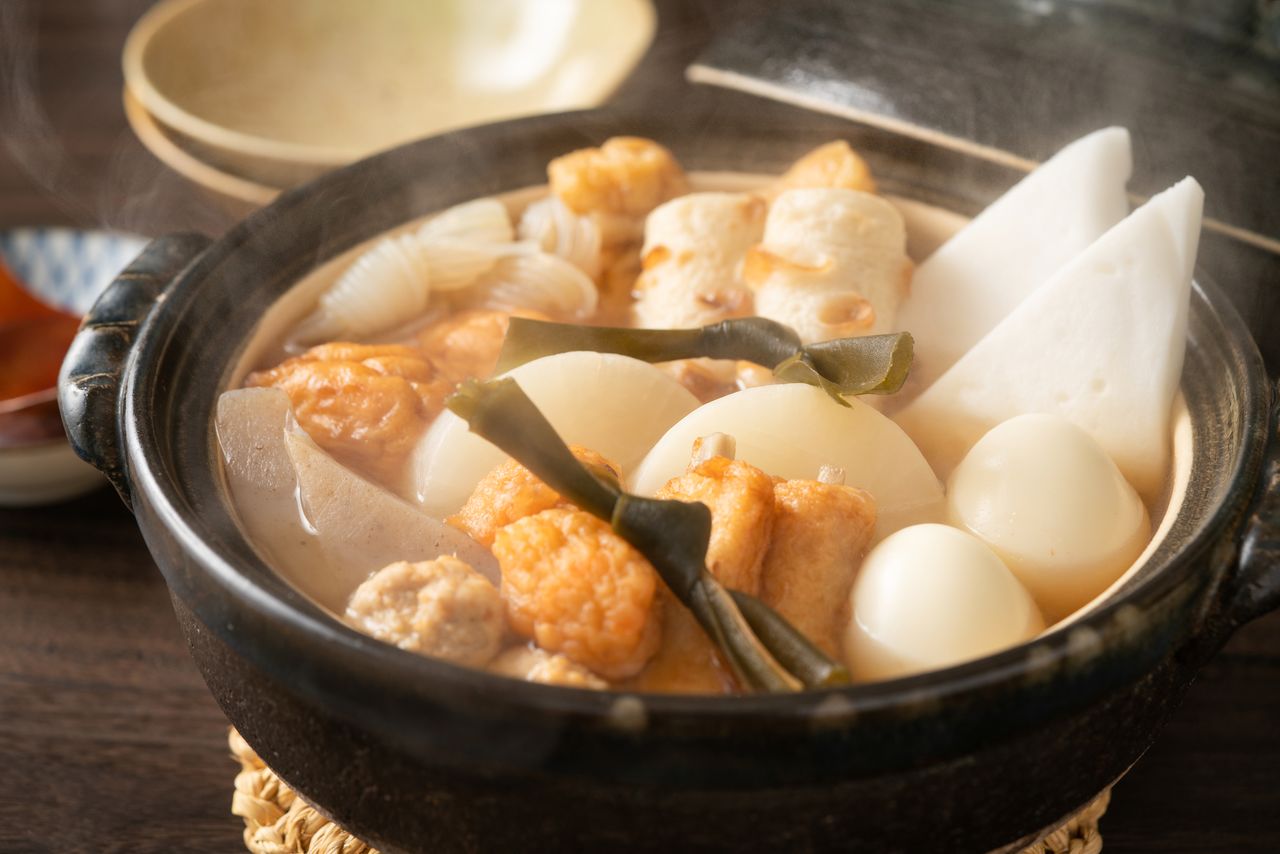
In addition to chikuwa and hanpen, fish paste products such as satsuma-age and tsumire (fish balls) are very popular in oden. (© Pixta)
Another reason for the popularity of buying oden in convenience stores was the enjoyment of choosing your favorite pieces in a self-serve format. But a post on social media about ill-mannered people poking pieces of oden with their fingers caused a stir, which happened to coincide with the COVID-19 pandemic. From the viewpoint of hygiene and infection prevention, the self-service format was stopped and acrylic panels were put up around the square pots of oden. This meant that convenience store staff had to take the customers’ orders, resulting in an increased workload on staff. Some stores stopped selling oden altogether. Customers also became less interested in oden as they were no longer captivated by the familiar appetizing aroma of the stock used in oden broth in the convenience stores.

Convenience store oden made nerimono a familiar item. (© Pixta)
Good News from Protein Science
In the midst of these circumstances, good news for the manufacturers of marine processed products appeared in the form of the Digestible Essential Amino Acid Score, a new evaluation standard for measuring high-quality protein.
Suzuhiro Kamaboko, in Odawara, Kanagawa Prefecture, is a long-established store founded at the end of the Edo period. Suzuhiro has always promoted the fact that fish meat is low in fat and high in protein, but the company was unable to fully demonstrate that superiority under the previous evaluation criteria.
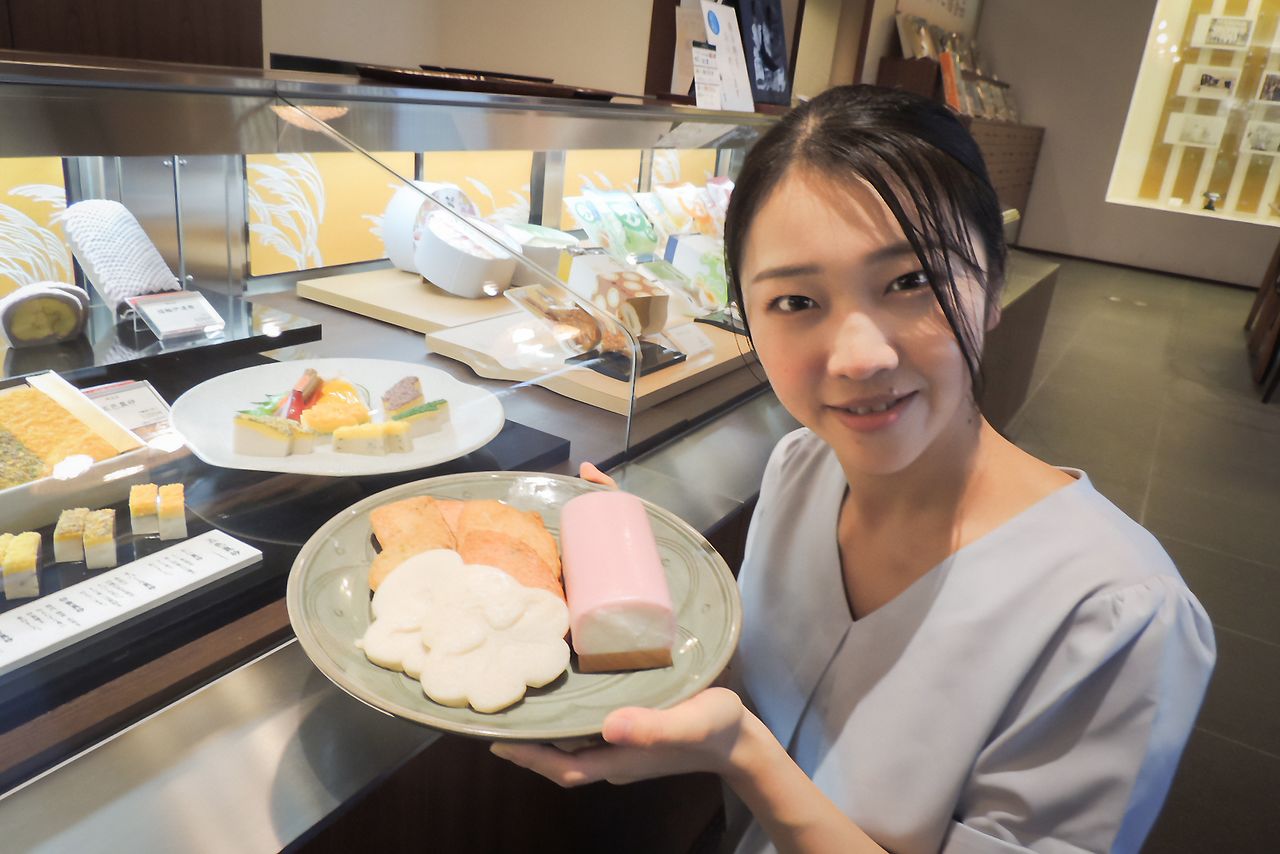
In addition to its namesake kamaboko, Suzuhiro Kamaboko also sells a wide variety of fish paste products. (© Kawamoto Daigo)
A good protein source is one that contains a good balance of the nine essential amino acids that cannot be made by the human body, and so must be obtained from our diet. In the past, the essential amino acid score used for evaluation was capped at a maximum of 1.0, meaning that the food provides 100% of the essential amino acids the body requires. Pork, milk, and eggs were lumped together with fish as having a perfect score, making it difficult to highlight the actual superiority of fish.
In 2013, the Food and Agriculture Organization of the United Nations announced the Digestible Indispensable Amino Acid Score, which takes digestibility and absorption into account, and makes it possible to measure scores higher than 1.0. Suzuhiro Kamaboko conducted nutritional composition testing with the help of the Yamaguchi Prefecture Health and Service Association’s Food Environment Inspection Center. Suzuhiro’s PR spokesperson proudly notes that nerimono made from processed marine products received a higher evaluation than other food products.
Higher Digestibility and Amino Acid Absorption
With the DIAAS method, kamaboko scored 1.28, which is higher than whole milk (1.14), boiled eggs (1.13), chicken breast (1.08), and tōfu (0.52). Animal protein scored better than vegetable protein. Fish peptides, made by enzymatic hydrolysis of ground fish, scored 1.26, which is superior to milk protein (1.18), whey protein (1.09), and soy protein (0.90).
The speed of digestion is of particular note, as kamaboko is more easily broken down in a shorter time compared to poached chicken breasts or boiled eggs. Suzuhiro Kamaboko’s spokesperson emphasizes: “In addition to its high quality, kamaboko is also highly digestible, making it ideal for those doing sports and as a nutritional supplement when fatigued.”
Working together with professional soccer players and others, the company has added scallops, squid, and octopus to fish paste to create colorful and stylish fish protein bars for retail. These fish protein bars rate a higher score than kamaboko and are likely to attract more attention from athletes.
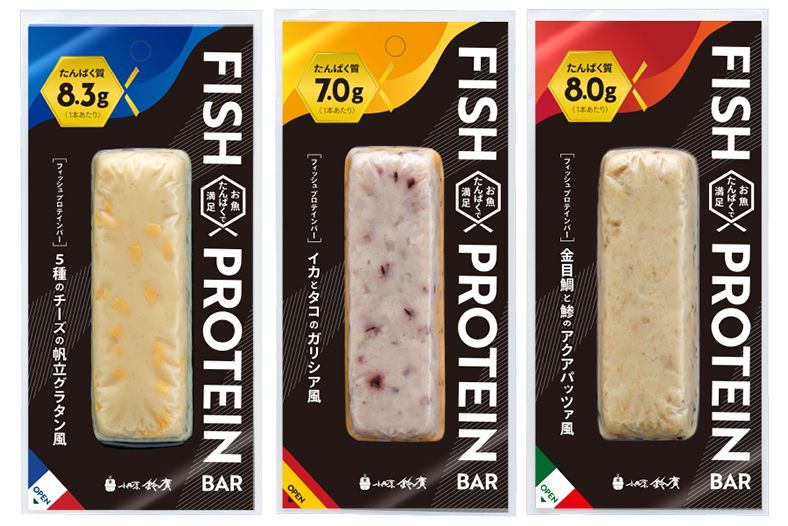
Fish protein bars with a good DIAAS score of 1.28 to 1.31. (Courtesy of Suzuhiro Kamaboko)
From July this year, Suzuhiro Kamaboko began offering sweets made from datemaki. Made into a paste, datemaki is used as an ingredient in gelato, smoothies, and fried churros, which are sold at the store in Odawara, Kanagawa Prefecture. The company hopes that the sweets will help the younger generation become familiar with datemaki and aims to make it one of Odawara’s specialties, the same as kamaboko.
As DIAAS analysis results are still slightly variable, the company will continue to improve the accuracy of testing and seek to discover more about the positive attributes of fish meat.
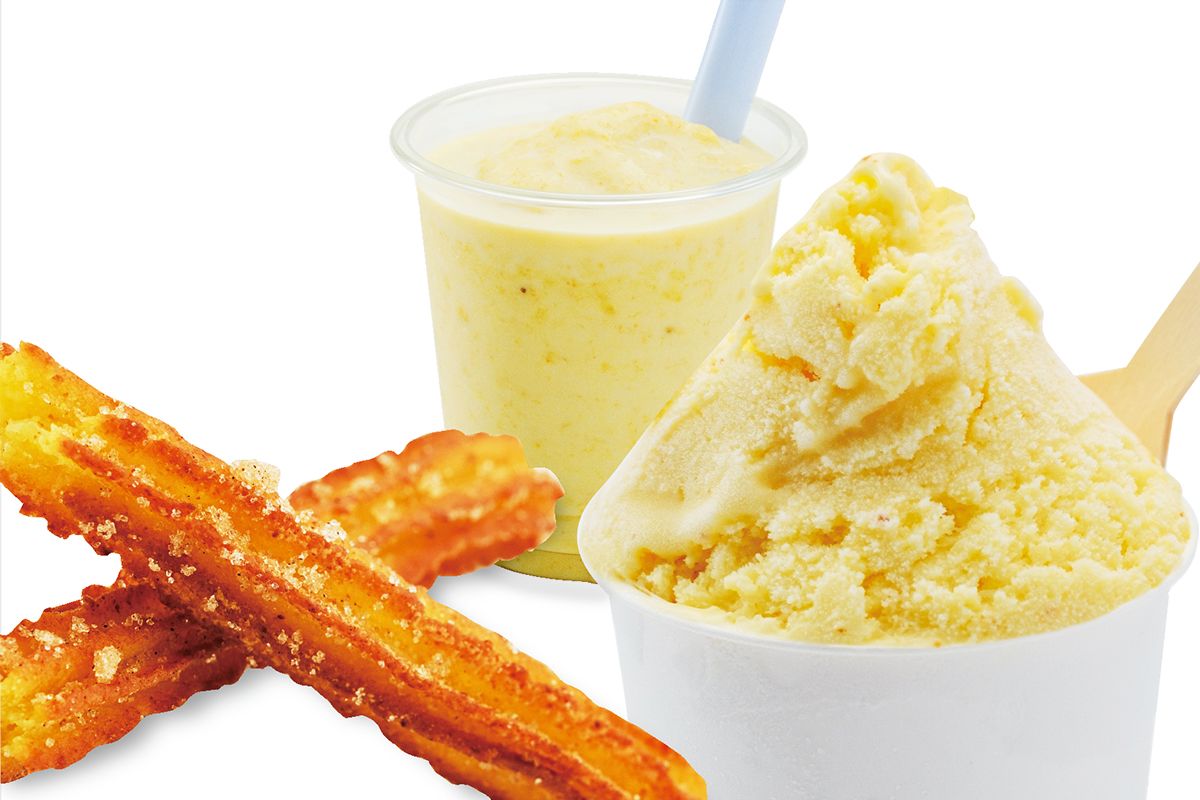
Sweets designed to boost datemaki uptake among younger diners. (Courtesy of Suzuhiro Kamaboko)
New Products Aimed at Young and Old Alike
Other manufacturers are creating products one after another that take advantage of nerimono’s quality protein and easy digestibility.
The Joetsu Environmental Sanitation Public Corporation in Niigata Prefecture manages the Kōfuku-no-mise Uozumi Kamaboko Shop, which sells a product called Kamanaisu. Known as “kamaboko you can drink,” Kamanaisu comes in a cup and can be microwaved to create a thick, potage-like texture, making it popular with the elderly who have difficulty chewing or may have a weaker ability to swallow. It is made with onions, carrots, and other vegetables, and can be used in place of pasta sauce or dressing, making it an easy way to consume high-quality protein.
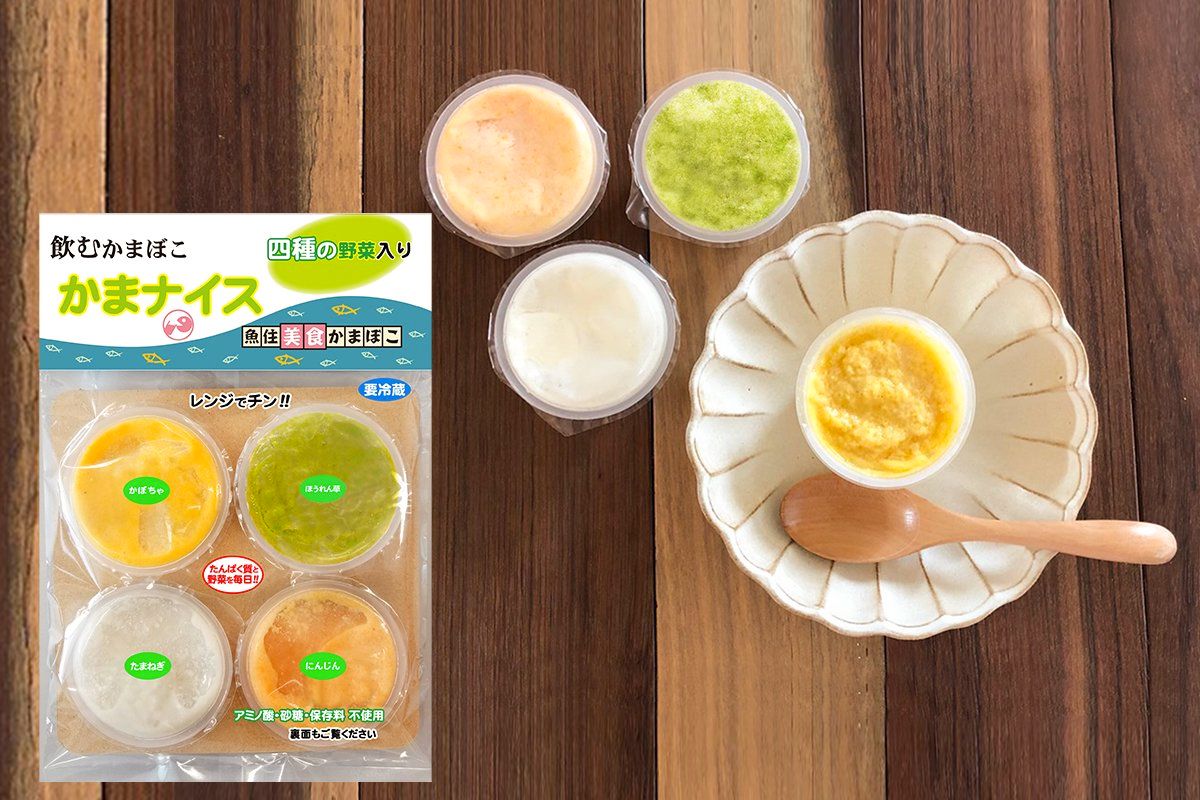
Kamanaisu turns to a thick soupy state when heated in a microwave oven, and is in high demand as a liquid diet. (Photo courtesy of Uozumi Kamaboko Shop)
Kibun Foods, located in Chūō, Tokyo, produces Sumikko-gurashi Kamaboko, a kamaboko product for boxed lunches modelled after the popular manga characters. A spokesperson from Kibun Foods says, “We will do our best to increase interest in nerimono products among all generations.”
Nerimono is part of the fish-eating culture that has long been a part of this maritime nation. Expectations are high that nerimono can evolve with the changing times and create new value.
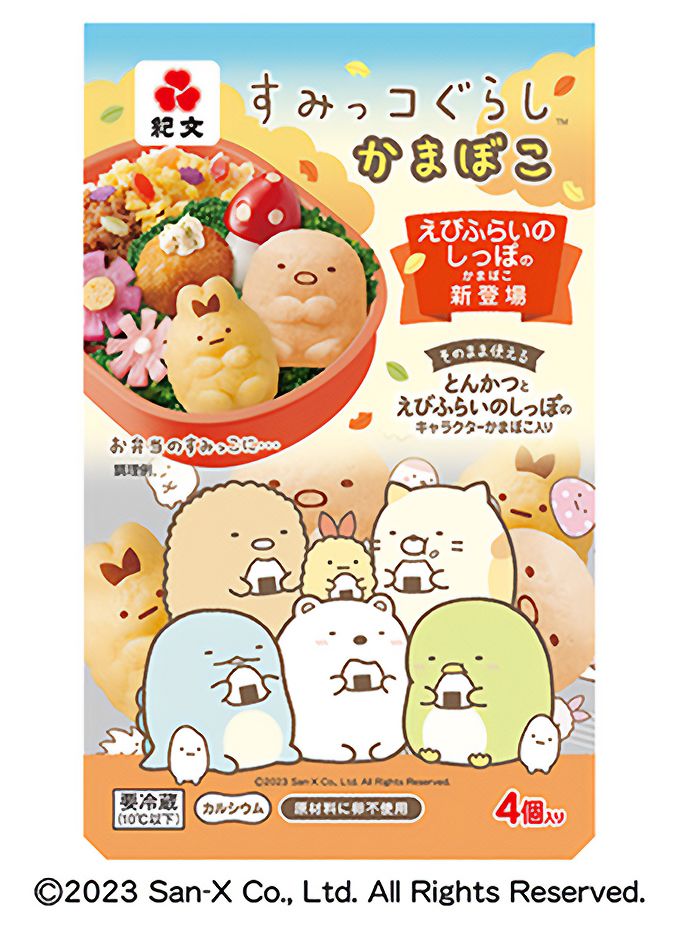
Kamaboko featuring Sumikko-gurashi is popular among kids and aimed squarely at the school bentō market. (Courtesy of Kibun Foods)
(Originally published in Japanese. Banner photo: Fish paste products including kamaboko, datemaki, and chikuwa. © Pixta.)
